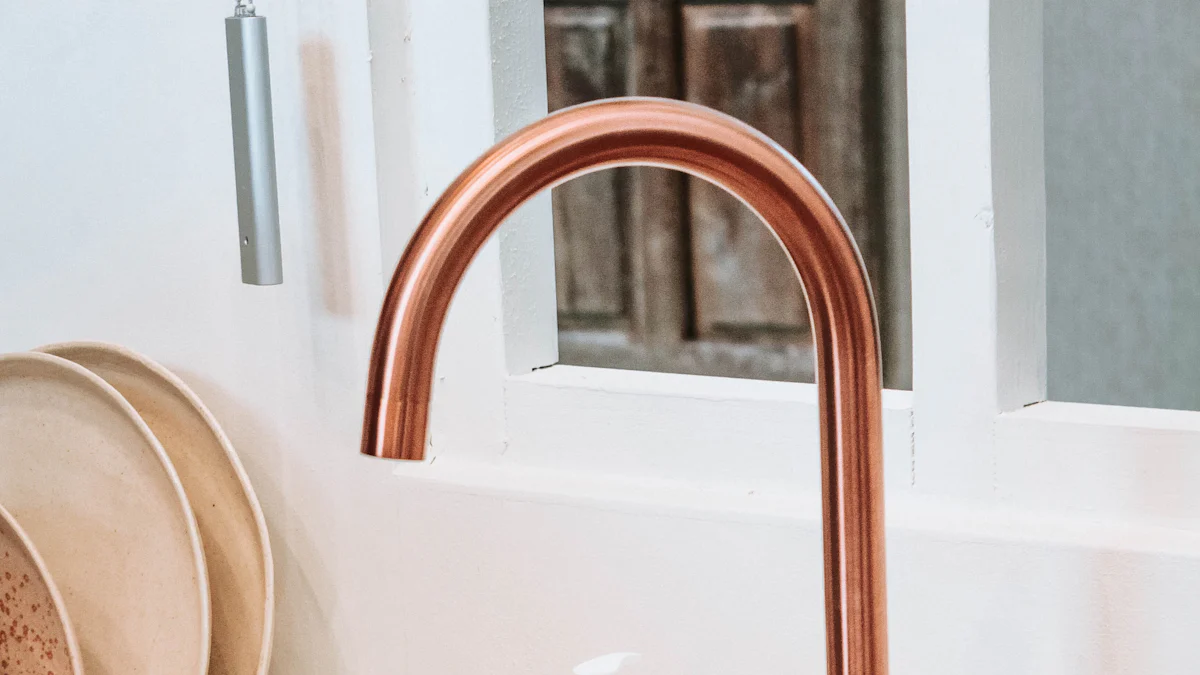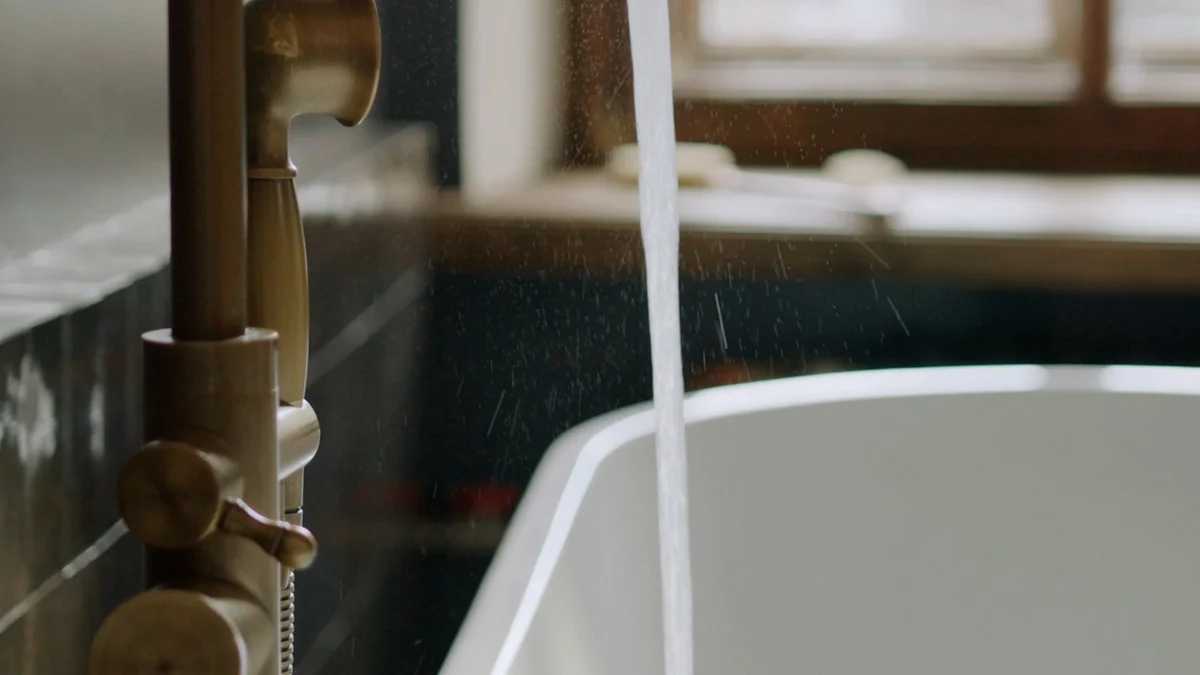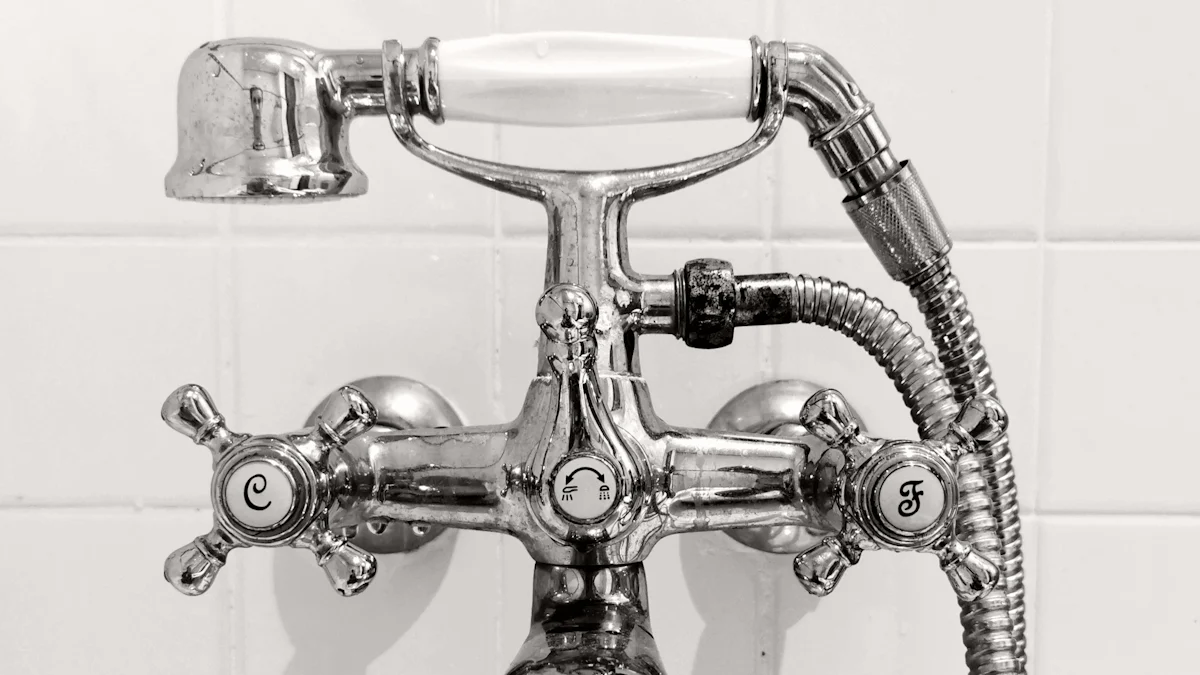
When choosing a faucet, you must consider durability, style, and water safety. PVC faucets stand out as lightweight and cost-effective options. However, they may not match the longevity or aesthetic appeal of metal alternatives. If you’re wondering, “Which material is good for the faucet? The advantages of PVC faucets,” this guide will help you decide.
Key Takeaways
- PVC faucets are light and cheap, good for less-used places like laundry rooms or gardens.
- Metal faucets, like brass or stainless steel, last longer and are safer for water, making them better for busy areas or drinking water.
- Think about how long faucets last; PVC costs less now, but metal faucets can save money later because they last longer.
Durability and Lifespan
How PVC Faucets Compare in Durability
PVC faucets offer a lightweight and affordable option, but their durability falls short compared to metal alternatives. These faucets resist corrosion and rust, making them suitable for areas with high humidity. However, PVC tends to crack or warp under extreme temperatures or prolonged exposure to UV rays. If you plan to use a faucet in a low-stress environment, such as a laundry room or garden, PVC can serve you well. For high-traffic areas, though, you might notice wear and tear sooner than expected.
Longevity of Brass, Stainless Steel, and Copper Faucets
Metal faucets, including brass, stainless steel, and copper, excel in durability and lifespan. Brass faucets resist corrosion and can last decades with proper care. Stainless steel offers exceptional strength and resists scratches, making it ideal for busy households. Copper faucets, while more expensive, develop a natural patina over time, adding character while maintaining functionality. These materials withstand daily use and environmental stress better than PVC. If you’re wondering, “Which material is good for the faucet? The advantages of PVC faucets,” metal options might be worth considering for their long-term value.
Factors That Impact Faucet Lifespan
Several factors influence how long your faucet lasts. Material quality plays a significant role, with metals generally outlasting PVC. Installation quality also matters; improper installation can lead to leaks or damage. Regular maintenance, such as cleaning and checking for wear, extends a faucet’s life. Environmental conditions, like water hardness and temperature fluctuations, also affect durability. Choosing the right material and maintaining it properly ensures your faucet serves you well for years.
Water Safety
Are PVC Faucets Safe for Drinking Water?
PVC faucets are generally safe for non-potable water uses, such as gardening or cleaning. However, when it comes to drinking water, you need to exercise caution. Some PVC faucets may leach chemicals, especially if exposed to high temperatures or sunlight for extended periods. These chemicals can affect water quality and pose potential health risks. Always check for certifications like NSF/ANSI standards, which indicate that the faucet meets safety requirements for drinking water. If you plan to use PVC faucets for potable water, ensure they are labeled as food-grade or drinking-water safe.
Tip: Look for PVC faucets specifically designed for drinking water to minimize contamination risks.
Water Safety of Metal Faucets
Metal faucets, such as those made from stainless steel, brass, or copper, offer better water safety. Stainless steel is non-reactive and resists leaching, making it an excellent choice for drinking water. Brass faucets often contain small amounts of lead, but modern regulations require manufacturers to limit lead content. Copper faucets naturally inhibit bacterial growth, which can enhance water safety. When selecting a metal faucet, verify that it complies with lead-free standards to ensure safe water for your household.
Health Considerations When Choosing a Faucet Material
When choosing a faucet material, prioritize your family’s health. Consider factors like chemical leaching, bacterial resistance, and compliance with safety standards. PVC faucets may suit non-drinking water applications, but metal options provide greater peace of mind for potable water. Always review product certifications and consult with professionals to make an informed decision. By choosing the right material, you can protect your household’s water quality and health.
Appearance and Style

Which Material is Good for the Faucet? The Advantages of PVC Faucets
PVC faucets offer a simple yet functional design that suits various spaces. Their lightweight nature allows for easy installation, and they come in a range of colors to match your preferences. If you’re looking for a budget-friendly option, PVC faucets provide a clean and modern look without breaking the bank. These faucets work well in utility areas like laundry rooms or outdoor spaces where aesthetics are less critical.
One of the key advantages of PVC faucets is their resistance to rust and corrosion. This feature ensures they maintain their appearance over time, even in humid environments. If you’re wondering, “Which material is good for the faucet? The advantages of PVC faucets,” their affordability and practicality make them a strong contender for specific applications.
Aesthetic Appeal of Brass, Stainless Steel, and Copper
Metal faucets elevate the style of your home with their timeless appeal. Brass faucets exude a warm, classic charm, while stainless steel offers a sleek, modern finish. Copper faucets stand out with their unique patina, which develops over time, adding character to your space. These materials often feature intricate designs and polished finishes, making them ideal for kitchens and bathrooms where style matters most.
Matching Faucet Materials to Your Home’s Design
Choosing the right faucet material depends on your home’s overall design. For a contemporary look, stainless steel complements minimalist interiors. Brass works well in traditional or vintage-inspired spaces, while copper adds a rustic touch. PVC faucets, with their versatility, can blend into casual or functional areas. Consider the color palette, fixtures, and decor of your space to ensure the faucet material enhances your home’s aesthetic.
Tip: Use a combination of materials in different areas of your home to balance style and functionality.
Environmental Impact

Sustainability of PVC Faucets
PVC faucets offer affordability and practicality, but their sustainability raises concerns. PVC, a plastic material, relies on non-renewable resources like petroleum during production. This process consumes significant energy and releases harmful emissions. While PVC faucets resist corrosion and last longer in low-stress environments, they are not biodegradable. Disposing of them contributes to landfill waste, which can persist for decades. If you prioritize sustainability, consider whether PVC aligns with your environmental goals.
Recyclability of Metal Faucets
Metal faucets, including those made from brass, stainless steel, and copper, excel in recyclability. These materials can be melted down and reused without losing quality. Recycling metal faucets reduces the demand for raw materials and minimizes waste. Many recycling facilities accept metal faucets, making disposal more eco-friendly. By choosing recyclable materials, you contribute to a circular economy and reduce your environmental footprint.
Environmental Footprint of Different Faucet Materials
The environmental impact of faucet materials varies significantly. PVC faucets have a lower upfront carbon footprint due to their lightweight nature and simpler manufacturing process. However, their long-term impact increases due to limited recyclability and landfill persistence. Metal faucets require more energy to produce but offer durability and recyclability, which offset their initial footprint over time. When deciding, ask yourself, “Which material is good for the faucet? The advantages of PVC faucets,” and weigh the trade-offs between cost, durability, and environmental impact.
Note: Opting for materials with a lower environmental footprint can help you make a more sustainable choice for your home.
Cost
Why PVC Faucets Are the Most Affordable Option
PVC faucets stand out as the most budget-friendly choice for homeowners. Their production process uses inexpensive materials, which keeps manufacturing costs low. This affordability makes them an excellent option for secondary spaces like laundry rooms or outdoor areas. You can often find PVC faucets priced significantly lower than metal alternatives, making them accessible for tight budgets.
Another reason for their low cost is their lightweight nature. Shipping and installation costs are reduced because PVC faucets are easier to handle. If you’re looking for a cost-effective solution without compromising basic functionality, PVC faucets deliver excellent value for money.
Cost Comparison of PVC and Other Materials
When comparing faucet materials, PVC consistently ranks as the cheapest option. Here’s a quick breakdown:
| Material | Average Price Range (USD) | Durability Rating (1-5) |
|---|---|---|
| PVC | $10 – $30 | 2 |
| Stainless Steel | $50 – $150 | 5 |
| Brass | $70 – $200 | 4 |
| Copper | $100 – $300 | 4 |
While PVC faucets save you money upfront, metal options like stainless steel and brass offer better durability and long-term performance.
Balancing Cost with Long-Term Value
Choosing a faucet involves more than just the initial price. PVC faucets may cost less, but their shorter lifespan could lead to frequent replacements. Metal faucets, though more expensive, often last decades with proper care. If you prioritize long-term value, investing in a durable material like stainless steel might save you money over time.
Tip: Consider your budget and the faucet’s intended use. For high-traffic areas, spending more on a durable material can reduce maintenance and replacement costs.
PVC faucets provide a lightweight and budget-friendly solution for your home. However, brass, stainless steel, and copper faucets excel in durability, water safety, and style.
Tip: Evaluate your priorities. Consider cost, aesthetics, and environmental impact before deciding. Balancing these factors ensures you choose the best faucet material for your needs.
FAQ
What are the main advantages of PVC faucets?
PVC faucets are lightweight, affordable, and resistant to rust and corrosion. These features make them ideal for low-stress environments like laundry rooms or outdoor spaces.
Can PVC faucets handle hot water?
PVC faucets can handle warm water but may warp or degrade with prolonged exposure to high temperatures. For hot water applications, metal faucets are a better choice.
How do I maintain a PVC faucet?
Clean PVC faucets with mild soap and water. Avoid abrasive cleaners or harsh chemicals, as they can damage the surface. Regularly check for cracks or leaks to ensure functionality.
Tip: Always follow the manufacturer’s care instructions to extend the lifespan of your faucet.
Post time: Mar-06-2025
